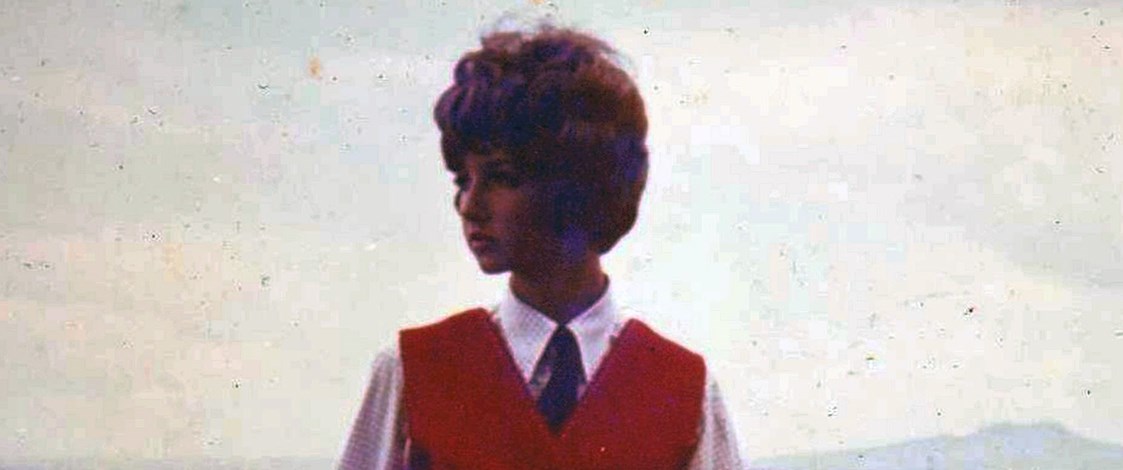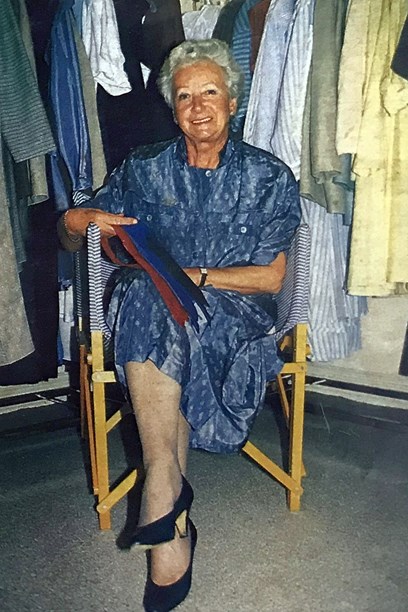Stories
BJ Ties
1972-1986

When Bette Daniels began making men’s ties in the 1970s, they were so wide she likened them to serviettes. By the 1980s, tastes in men’s fashion had changed and ties narrowed down to what Bette described as a "classical width".
Bette, the mother of fashion designer Jane Daniels, got into the tie-making business at Jane’s suggestion. They started the enterprise together in 1972, initially producing fashion ties for women. For their label, BJ Ties, they used the first letter of their first names – Bette and Jane.
Jane, who at the time, was involved with freelance fashion design, modelling, business studies and compering fashion shows, noticed that women’s ties were a big hit in Australia and intuited they would become popular here as well.

In this photograph of Jane Daniels taken in the early 1970s she is wearing a BJ tie with a shorts-suit of her own design. It was made with the help of her mother Bette and grandmother Marjorie Marian Shepheard. Image © Jane Daniels.
Her father Russell devised a solid board template of four ties on the bias, and another template for linings. The cutting of the fabric took place on the dining-room floor, with the three members of the family pitching in and doing their bit. "It was a real cottage industry," says Jane. "Mum on the sewing machine, Dad helping with cutting after working all day, and me to a lesser extent, contributing in other ways."
With their tie collection in a suitcase, and armed with an invoice book, Jane and Bette would take off in Bette’s Mini and cold-call on boutiques. "Because we spotted the trend early, we had a hugely long run," says Jane. "We made the ties in all sorts of fabrics – silk, cotton, taffeta, lots of prints - some of them were bright and pretty outrageous. I remember an American Stars and Stripes pattern that was so popular, we couldn’t make enough. And the ties were so wide – about 13 cm across!"
When Jane went to England to further her design career, Bette ran BJ Ties on her own. As the demand for women’s ties had slowed down by then, she switched to making ties for men, and continued as she and Jane had done, packing up her car (now a Honda Civic) with samples and doing the rounds of the stores.
The business thrived and Bette had to employ outworkers to cope with the increased production.
A comment in Apparel magazine hailing BJ Ties "as some of the most elegant ties money can buy" was validated by the calibre of the label’s stockists. These included Saks and Masons in Auckland, all Barkers outlets throughout the country and other high-end menswear stores in Tauranga, Nelson, Hamilton and Rotorua.

Bette Daniels with samples of BJ Ties. Apparel magazine, 1986.
While there was sometimes a call for fine cotton ties, the preference in the 1980s was for silk. BJ Ties were made almost exclusively from silk imported from Thailand and Hong Kong.
Bow-ties were also surprisingly popular. "I was always expecting the demand to decrease," says Bette, "but it didn’t. The bow-tie went from being solely an evening accessory to one that was also worn during the day."
Bette Daniels ran BJ Ties successfully for 14 years, but when Jane set up her own fashion label in 1986, she wound up the business and put her energy into her daughter’s new venture. The old Honda Civic, in which she clocked up so many kilometres touting her ties, became the first company car for Jane Daniels Design.
Text by Cecilie Geary.
Last published April 2019.